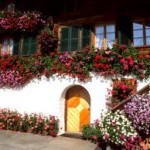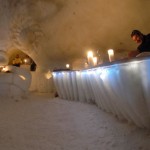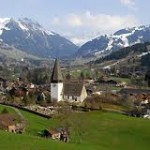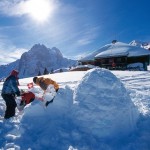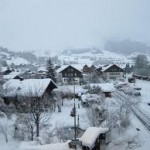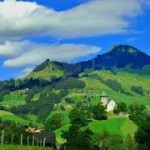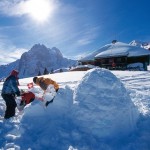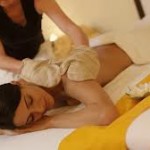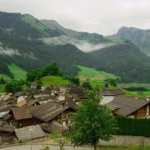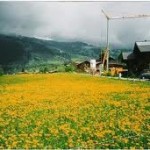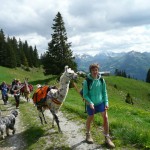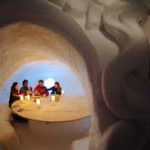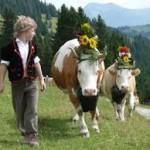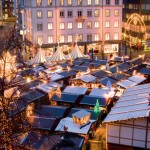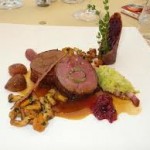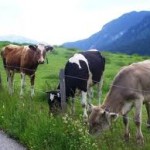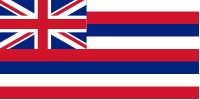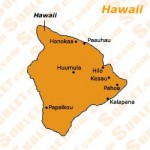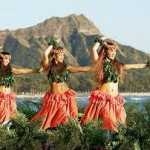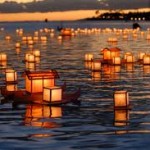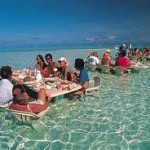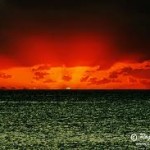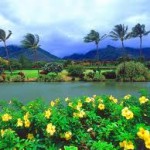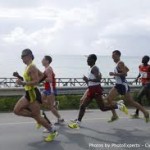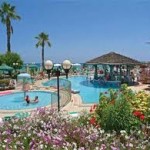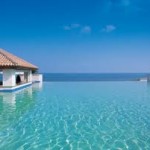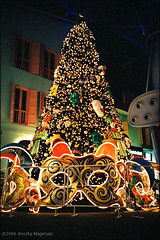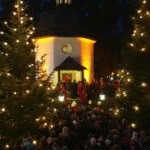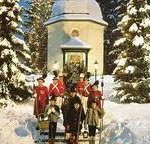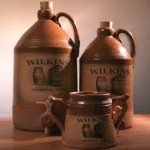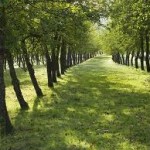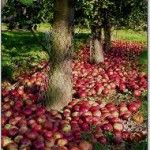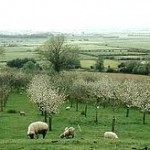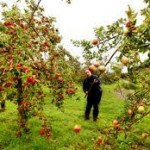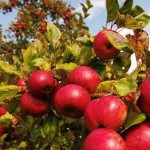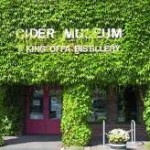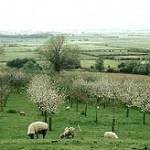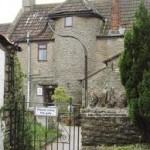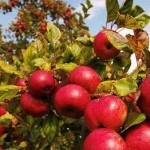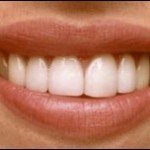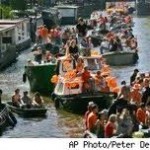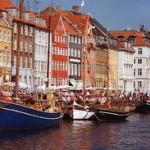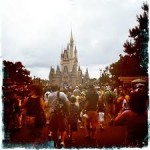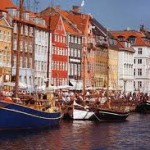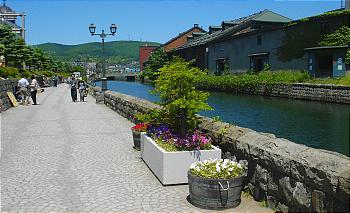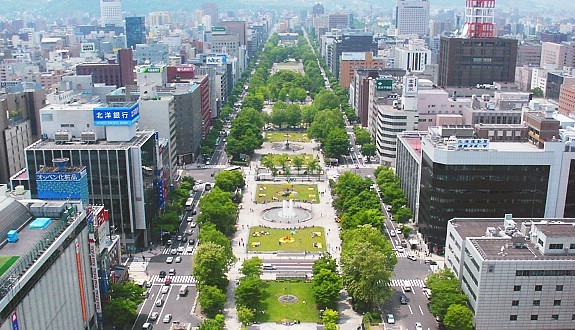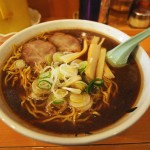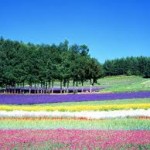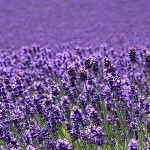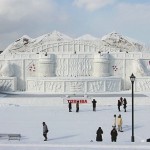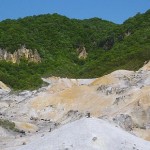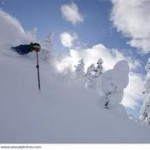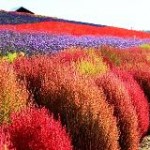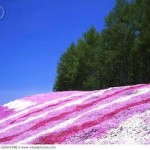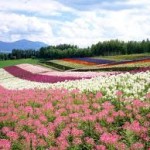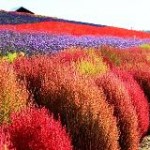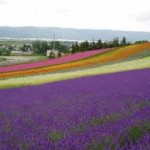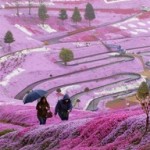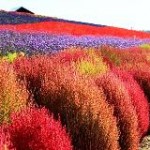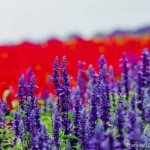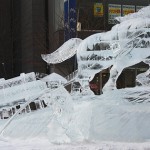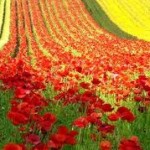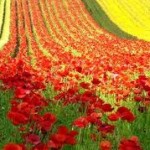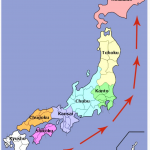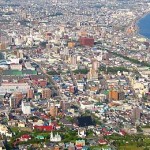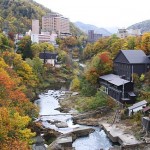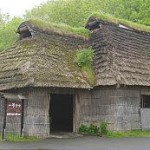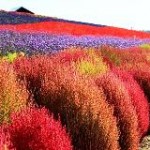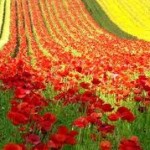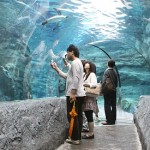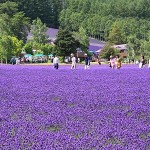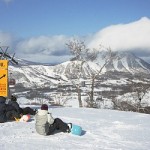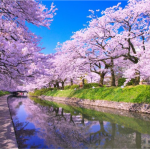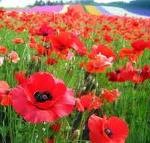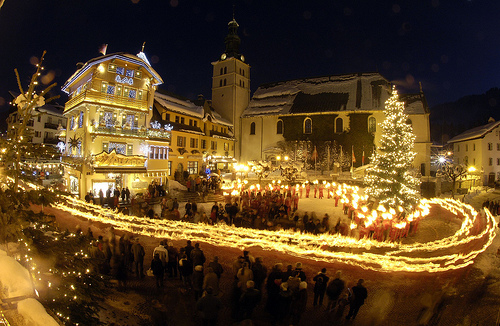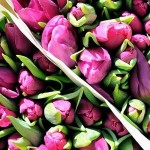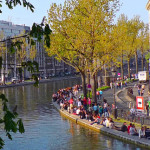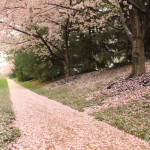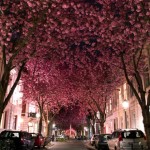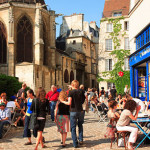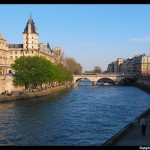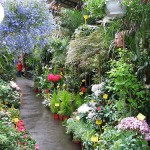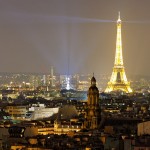By Blane Bachelor
Along with backyard barbeques and baseball games, summertime is synonymous with wanderlust. And since this breezy season officially begins on June 20th, here are our picks guaranteed to make for a brag-worthy getaway in some of the latest travel hotspots, from Fourth of July celebrations in Philadelphia, the Birthplace of America, to spectacular shopping deals in St. Barts to a flurry of festivals in Montreal.
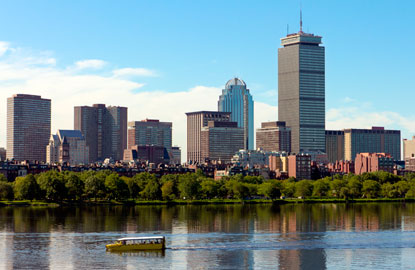
Boston
Why Go Now: 2012 is a big year in Boston, particularly for baseball fans, history buffs, and art aficionados. Two iconic structures are marking their 100th anniversaries: Fenway Park, the grand dame of baseball diamonds, and the majestic Fairmont Copley Plaza Hotel, which will host celebratory events throughout the summer. Then, artsy types will swoon over the recently unveiled Renzo Piano-designed new glass wing of the Isabella Stewart Gardner Museum.
On the history front, the Bicentennial of the War of 1812, along with the Star Spangled Banner Celebration, coincide with the always-popular Boston Harborfest during the week of July 4. And no matter which end of the political spectrum you fall on, the new Boston Tea Party Ships and Museum, which opens on June 26, is a captivating blend of history and technology. Unwind all season long with the Summer on the Waterfront series, featuring live music and historic and cultural attractions.
Where to Stay: Boston’s newest lodging is The Revere Hotel, named for the city’s most famous patriot (rooms from $258). It’s a brilliant blend of historic flavor and modern-day style, with a balcony for all of its 356 rooms (just refrain from shouting “The British are coming!”). For luxury, the Fairmont Copley Plaza Hotel, which turns 100 on August 19, can’t be beat. Price-wise, neither can its Celebration of a Century package, starting at $100/person for lodging for two.
Where to Eat: Wood-fired ovens are the inspiration at Area Four, producing divine puffed crust pizzas and roasted veggie dishes that are alone worth the trip to Cambridge. Tap into the city’s tacos and tequila explosion at Tico, a lively Nuevo Mexican hotspot in Back Bay that serves up tasty lobster-avocado tacos, ceviche, and margaritas.
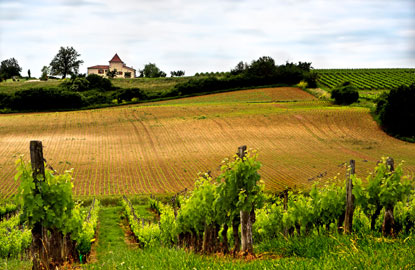
Bordeaux
Why Go Now: Bordeaux may be best known for its world-famous wines, but it’s also an under-the-radar destination for arts and culture, making it a magnifique choice for an upscale summer getaway. Oenophiles should mark their calendars for the famed Bordeaux Wine Festival, with nearly 80 appellations represented along a mile-long stretch of tastings (June 28-July 1), while art fiends can opt for a river cruise to UNESCO World Heritage sites or a visit to the prestigious National Opera of Bordeaux. Foodies will find their fill of culinary delights at the Les Epicuriales festival (June 14-July 1), which features about 30 top restaurateurs in the Allées de Tourny, or Golden Triangle, as well as cooking and tasting workshops in a festive atmosphere.
Where to Stay: The elegant Regent Grand Bordeaux, the masterpiece of famed French designer Jacques Garcia that opened in 2006, has added another luxe extra to its already-impressive amenity list: wine concierges. These grape gurus take the guesswork out of tasting logistics by setting up personalized tours and appointments at prestigious chateaux in the Bordeaux region and tracking down rare bottles.
Where to Eat: The Regent Bordeaux’s Michelin-starred restaurant, Le Pressoir d’Argent, is named after a coveted piece of culinary equipment, “The Silver Press”—a silver lobster press that’s one of a handful in the world. Order one of the lobster dishes from a quintessentially French menu, and you can see it in action. In town, locals are flocking to Solena, run by a French chef and his expat American wife for whom the restaurant is named. The farm-to-table French bistro serves an inventive prix-fixe menu focused on fresh, regional fare–recent items have included foie gras with sweet corn and a bone-in ribeye for two—complemented by a Bordeaux-centric wine list.

Montreal
Why Go Now: Summer or not, Montreal has never been hotter, with a growing culinary status, exploding arts scene, and a terrific tradition of festivals–which, let’s face it, are way more appealing when the city isn’t blanketed in snow. From July to August, the head-spinning Montreal Festimania takes over with 11 overlapping festivals, from the 30th annual Just for Laughs Comedy Festival (Joel McHale and Howie Mandel are among the top names this year) to the Festival Mode & Design, a mashup of fashion shows, cutting-edge design exhibits, and, of course, chic parties galore.
Other noteworthy festivals: Festival International Montreal en Arts, or FIMA, an outdoor art extravaganza on the BoulevArt, a one-kilometer stretch of the car-free-for-the-summer Sainte-Catherine Street, and the Montreal International Jazz Festival (June 28-July 7, 2012), whose spectacular lineup of 650-plus shows (including 370 free outdoor concerts) includes everyone from James Taylor to Esperanza Spalding to Norah Jones. Finally, to enjoy one of summer’s simple pleasures Montreal-style, grab a set of wheels in the city’s acclaimed BIXI Bike rental program (day rentals, $7) for a carefree cruise.
Where to Stay: Recently re-opened after an extensive renovation, the Ritz-Carlton Montreal (rooms from $425), the first hotel in the world to bear the Ritz-Carlton name, boasts plenty of reasons besides its Aug. 31 centennial to celebrate: 130 elegantly redesigned rooms and suites, a new indoor saltwater pool and an exquisite lobby.
Where to Eat: BEVO Pizza, a fresh new bar and pizzeria in Montreal’s Old City, has earned rave reviews for its simple, well-executed pastas and wood-fired pizzas, accompanied by a cocktail list that puts a creative spin on the basics: prosecco sangria, for example, and a limoncello drop. Another trendy newcomer, Hambar Resto, co-owned by Phillipe Poitras, one of Montreal’s top sommeliers, serves up an extensive menu of charcuterie-inspired dishes and an excellent wine list in a chic, although sometimes noisy, setting in the St. Paul Hotel.
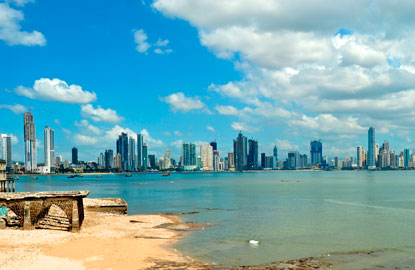
Panama
Why Go Now: Panama, one of our 21 Places to Go in 2012, has firmly planted itself on the map for in-the-know travelers. It’s no surprise why: cutting edge culture, adventure offerings galore, and inimitable Latin flavor, all at affordable prices. Experience it all by making Panama City your home base, which offers the best vantage point for exploring the city’s revitalized Casco Viejo (or Old Town (though the Spanish translation literally means “old shell”), and easy access to adventure-based day trips such as biking through the rainforest.
In addition to the ongoing expansion of the Panama Canal (its capacity will be tripled by 2014), another much-anticipated arrival to Panama is the Frank Gehry-designed Biodiversity Museum: Panama Bridge to Life, a spectacular tribute to both Gehry’s genius and the remarkable biodiversity of the region.
Insider Tip: Cap off your summer with a trip in August, as July is the rainy month in Central America.
Where to Stay: Panama City’s newest boutique offering, the Tantalo Hotel (rooms from $160), offers a breath of fresh, art-inspired air into the Old Town. With 13 rooms featuring the creations of 13 different artists, a stay here is like immersion into a hip museum. For a more glamorous experience, check out the 1,500-room Hard Rock Hotel Panama (rooms from $159), the Westin Playa Bonita (rooms from $185)with views of the Panama Canal, or the Trump Ocean Club (rooms from $175), a soaring, 70-story building that’s the tallest in Latin America and resembles a soaring sail.
Where to Eat: Tuck into simple, flavorful Pan-Asian favorites like spicy pork edamame, pad Thai, and shrimp curry at Elephant Grill, a local joint recently opened by one of Panama City’s most successful restaurateurs (reservations are recommended; no website; the restaurant is located on Calle Uruguay).
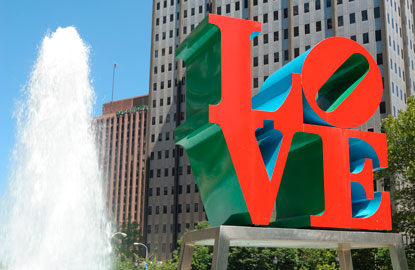
Philadelphia
Why Go Now: The City of Brotherly Love is a destination that travelers, especially history and art buffs, are sure to love this summer, with a bevy of art events and 4th of July celebrations (annual favorite Let Freedom Ring brings together descendants of the signers of the Declaration of Independence to ceremonially tap the Liberty Bell). Creating plenty of buzz in art circles and beyond is the reopening of the world-renowned Barnes Foundation in a 93,000-square-foot architectural marvel that houses one of the world’s largest collection of Impressionist, Post-Impressionist, and early Modern paintings.
More world-class creations beckon at the Philadelphia Museum of Art (“Visions of Arcadia” runs from June 20 to Sept. 3). A must-do item for any itinerary: Taking a peek at history’s oldest surviving biblical texts as part of the fascinating Dead Sea Scrolls: Life and Faith in Ancient Times exhibit at the Franklin Institute (through Oct. 14). And, for a perfectly patriotic cap-off, the The Life and Music of Bruce Springsteen (through Sept. 3) provides visitors a rare look at 150+ artifacts from the career of this American music legend, including Fender Esquire guitar from the cover of Born to Run and numerous lyrics, handwritten by The Boss himself.
Where to Stay: Revel in both history and luxury at the Hotel Latham, a 139-room boutique property housed in a century-old former upscale apartment building (also on the National Register of Historic Places) that unveiled a multi-million renovation this spring. Expect sophisticated but welcoming décor, friendly service, and thoughtful extras like complimentary (though first-come, first serve) chauffeur service in an Audi A8 luxury sedan.
Where to Eat: A welcome new addition to bar-studded 18th Street is the Rittenhouse Tavern, housed in a 1906 mansion and part of the Philadelphia Art Alliance. Grab a table on the charming patio and order some bistro-style small plates and a hand-crafted cocktail (the gin-based Betsy Ross, perhaps). Over the summer, the tavern hosts Firkin Fridays, when it taps casks of ale and offers specially priced dishes. For creative comfort food–think cheese steak pot pie and white chocolate habanero chicken wings–in a cozy, ages-old vibe, check out the Square Peg, housed in a building that dates back to the 1790s.

Sicily
Why Go Now: While this spectacular island has long been a holiday favorite for European jetsetters, it still remains under the radar for many foreign tourists. Get in on the secret during the dry summer months, lounging on sun-drenched beaches and savoring languorous seafood lunches by day and strolling the enchanting village streets by night, all against the majestic backdrop of Mount Etna (a still-active volcano!) and the Mediterranean and Ionian seas. While Palermo, the Sicilian capital in the northwest corner of the island, deserves a visit, in-the-know Italians opt for Taormina in the northeast, as our recent Insider’s Guide uncovers. From July to August, the city’s annual Summer Arts Festival takes center stage with music, dance, and opera, and this year’s lineup is studded with stars including Sting and Ben Harper. An idyllic day trip is the Egadi Islands, a blissfully secluded aquamarine paradise about a 40-minute ferry ride from Sicily.
Where to Stay: The Ashbee, a chic, spacious boutique property perched in a historic mansion on a cliff facing the Ionian Sea, is decidedly the latest it-spot for travelers, with whitewashed décor, an infinity pool, and exquisite gardens (rooms from around $340). About 15 minutes from Taormina’s town center, Villa Ducale is a longtime favorite (rooms from around $340), with cheerful, Mediterranean décor, balconies in every room, and gracious service.
Where to Eat: Spend a warm summer evening on the terrace of Al Duomo, a classic Taormina trattoria that serves traditional favorites from East Sicily (braised lamb stew, mashed beans, and seafood fresh from the sea) in a relaxed, friendly setting.
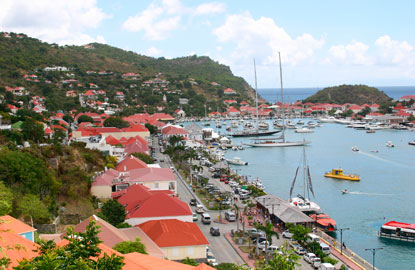
St. Barts
Why Go Now: Forget the sky-high prices and crowds of celebrities and their overstuffed entourages during winter’s high season, and opt for a swanky summer escape to this glam Caribbean paradise. Savvy fashionistas head to St. Barts in June, July, and August to snap up massive sales on breezy, boho-inspired beachwear and jewelry from some of the world’s top designers, including Calpyso, a beloved New York City brand that originated here. From Aug. 6-18, bargains flourish in the shopping haven of Gustavia. Francophiles will also delight in island-wide Bastille Day celebrations on July 14.
Where to Stay: Pamper shopping-weary feet at the ridiculously elegant Hotel Guanahani and Spa, which has a “Run of the House Room” special through July 15 (370 Euros includes single or double occupancy, breakfast and round trip transfers). Nestled in an upscale residential area, The Hotel Christopher beckons with a more low-key vibe without sacrificing sophistication or glamour. The recently refurbished property features well-appointed bungalows and modern décor (rooms from $412).
Where to Eat: Fitting for such a star-studded destination, celebrity chef Jean-Georges Vongerichten has brought his culinary pedigree to the restaurants at it-hotel Eden Rock. Savor a rosé-soaked lunch inspired by Vongerichten’s beloved ABC Kitchen at daytime hotspot Sand Bar, located right on the beach; by night, the chef’s vibrant Asian street-food flavors take center stage at On the Rocks.
Photo Credits: Boston: Bostonvia Shutterstock.com; Bordeaux: Bordeax countrysidevia Shutterstock.com; Montreal: Montreal via Shutterstock.com; Panama: Panama City via Shutterstock.com; Philadelphia: SeanPavonePhoto / Shutterstock.com; Sicily: Taorminavia Shutterstock.com; St. Barths: St. Barthsvia Shutterstock.com








